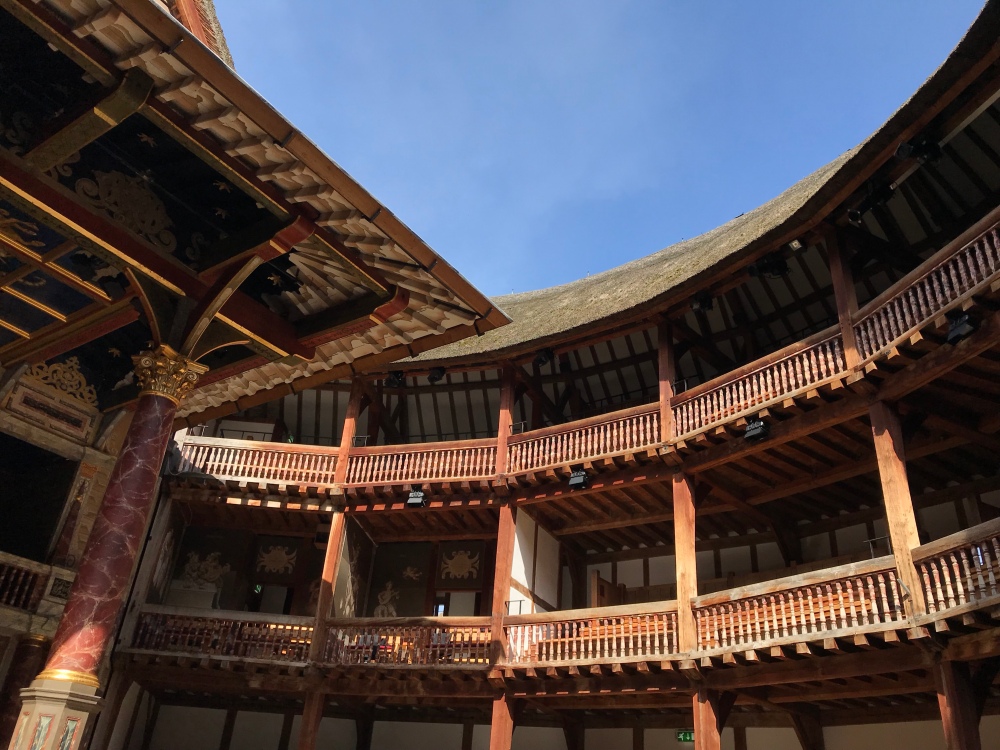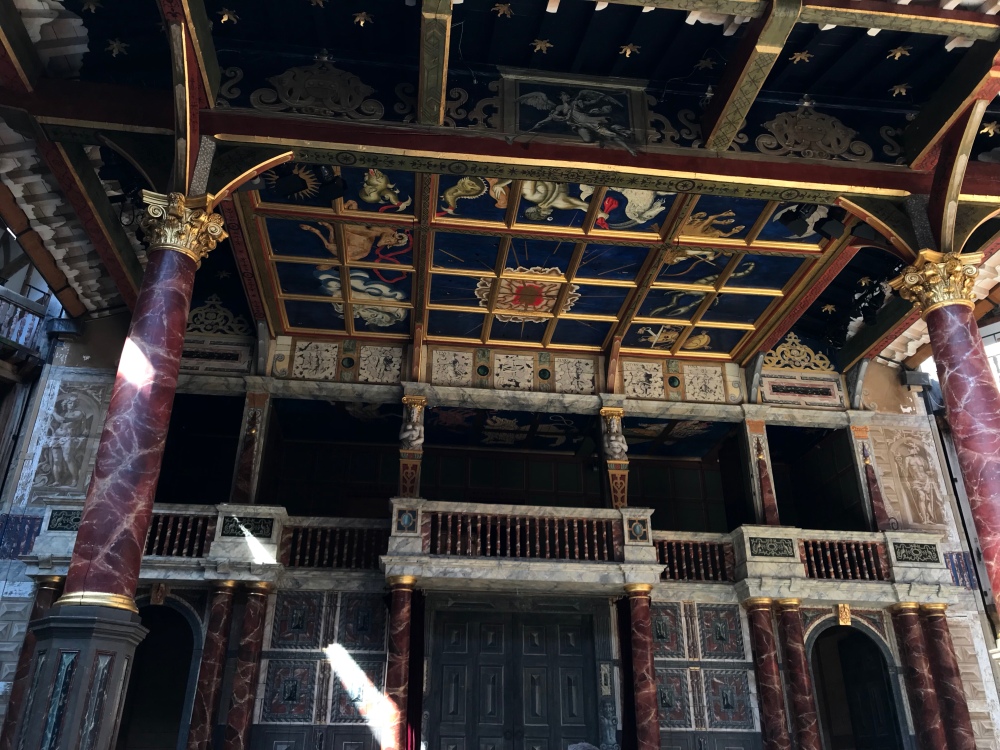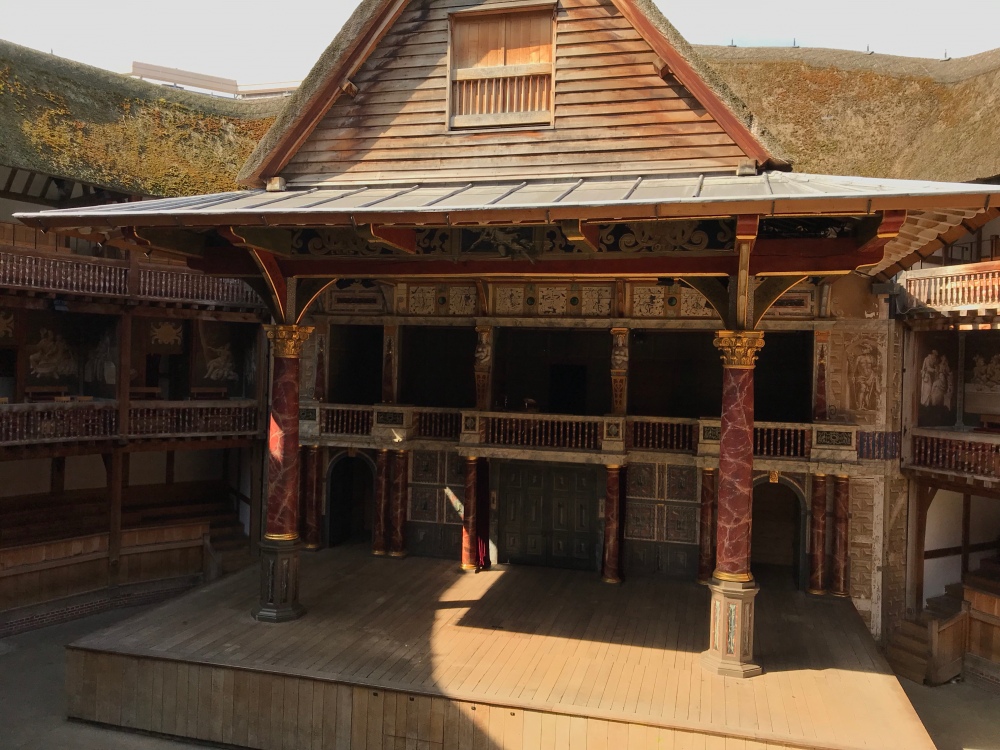
Today we toured Shakespeare’s Globe Theatre. As someone who has been studying and participating in theatre since I was nine years old, today was a dream. We had already seen a production of As You Like It a few days ago in the Globe, but being able to have our own private tour of this remarkable replica of Shakespeare’s original Globe was incredibly special. Our tour guide was very knowledgeable, not only about the history of recreating the beloved Globe, but about the motivation that went into developing the original Globe theatre. The tour guide explained that all of the elements that went into the inspiration for the architecture of the Globe are shown through many of Shakespeare’s production. The weather, audience, architecture, social status, and the world of audience and actor relationship that is created in the theatre are all part of what went into creating the original Globe. In Shakespeare’s time the standing area by the stage where most stand and wait in line today, were for the lower class workers. The butchers, fish cooks, and farmers all came after work to enjoy some theatrical entertainment for very cheap. Shakespeare used to deem this area “Penny Stinkards” where you could obtain a standing ticket for a penny and the area smelled awful from the smells of the day the lower class workers would bring. The tour guide also explained that at that time, Shakespeare’s plays seemed more like rock shows than that of theatre experiences today. The theatre Shakespeare experienced also dealt heavily with class distribution. The lower class people stood by the stage as “groundlings”, the wealthy sat in “gentleman boxes” by the stage showing off their money and status by their clothing, and the aristocrats sat next to the band. Money fueled a lot the components of Shakespeare’s audience and what went in to producing the plays from page to stage. The production we saw today of Hamlet was fairly similar to what some might have seen back in Shakespeare’s today in the lack of elaborate set, costume design, and gender blind casting. In today’s production a woman played Hamlet and a man played Ophelia. However, in Shakespeare’s day women would not be allowed to be actors. The costumes also signified status in the play. The wealthier characters dressed more Victorian and the lower class workers dressed more modern. Some of the costume choices drew me out of the production a little in how modern they were. I understand based on what the tour guide said that they are experimenting with elements of modernization in their productions. However, the modern costumes distracted me from creating the imaginary world of Hamlet. I feel that costumes were especially important for Shakespeare’s plays considering the set was minimal and you had the actors, dialogue, and costumes to rely on for building your imagination as an audience. I thought the actors in this production were incredible, but the lead actor playing Hamlet has also been a director of several productions at the Globe and I felt that because a lot of the choices on stage were actor led, the blocking seemed a little too chaotic and took away from the narrative. I think we are used to seeing Shakespeare in America dressed up with elaborate sets and costumes that helps the audience in creating these imaginative worlds. However, I believe the way we saw Hamlet today is the closest I will see to what Shakespeare originally had the plays performed. I think Shakespeare purposefully had his plays with little set and relied heavily on the actors so that it forced the audience to feel and imagine. I appreciate the production of Hamlet this afternoon, even if it was very minimalistic compared to most theatre productions I am used to seeing today. I think the process of a cast in 2018 experimenting with modernization in casting, costume, and blocking is different to what would have gone on in Shakespeare’s day. I do believe that many aspects of today’s production are similar to how Shakespeare would have it performed in the simplicity of set, design, and the techniques the actors used to connect with the audience. I think even as theatre and our society adapt with color blind, gender blind, and color consciousness casting and the ways these methods evolve, a lot of aspects of theatre will always remain true. Theatre asks us to feel, to create our own worlds, and to take some time away from our daily lives to let go and to welcome change, just as in Shakespeare’s day. Visiting the Globe theatre was amazing and I can not believe I got to see a replica of what Shakespeare envisioned around 400 years ago.
Cheers,
Rachel









